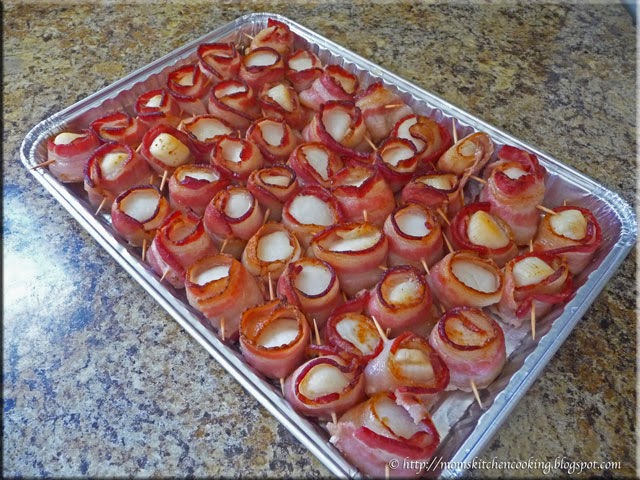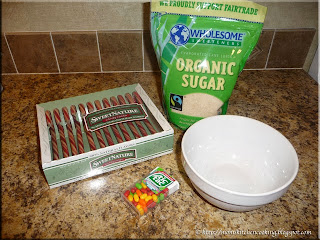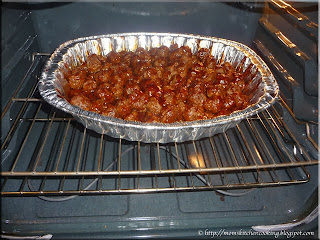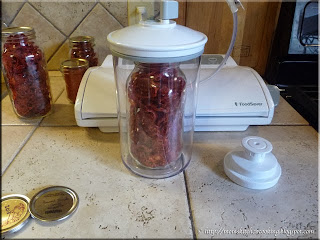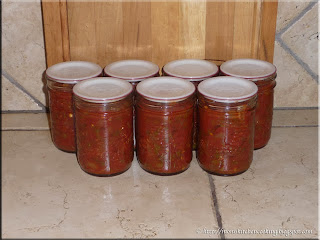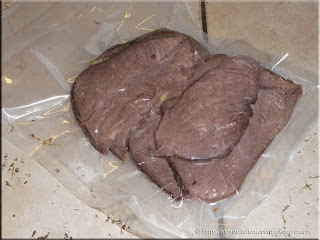I am a high volume home canner with over 30 years of experience. In addition to the two piece metal snap lids, I also use reusable canning lids (eg. glass inserts, glass lids, Tattler, and 4ever Recap). I ordered one dozen standard and one dozen wide-mouth size of the 4ever Recap lids. The 4ever Recap lids came in at 10¢ less per lid than the Tattlers and
promised the lids with gaskets (treated properly) would last forever.
As a high volume canner, I knew that savings would make a difference. I contacted 4 Ward Industries immediately upon
receiving my 4ever Recap lids who did not resolve my problem or address my concerns.
I started testing the 4ever Recap lids in April of 2013, wrote about sealing problems with the 4ever Recap lids the same month, and wrote a review of the 4ever Recap lids in May. I left the remainder of the jars using 4ever Recap lids in the pantry which is both cool and dark. During the midst of the busiest of my canning while putting newly canned foods in the pantry I noticed a jar of stock with a 4ever Recap lid that looked strange. Upon closer inspection I discovered the lid had actually popped up and the contents obviously spoiled. I immediately checked through all my jars of stored food, no easy task given the volume. Every jar with a 4ever Recap lid had come unsealed. I have to tell you, I was beyond furious!

I have used the reusable lids often enough that I can tell just by a quick glance whether the seal has failed. It is very, very subtle but there is less compression between the lid and the jar (orange arrow). What caught my attention though was the clouding of the turkey stock (yellow arrow left). What I found with the remaining jars with 4 ever Recap lids were clear signs of spoilage (yellow arrow right). I carefully brought the jars to the kitchen for further investigation, taking pictures. Of note, jars of the same stock canned on the same day in the same batches using Tattler reusable canning lids and metal snap lids were fine with no sign of spoilage or seal failure. All of the jars were stored in the same pantry in the same conditions.

I know the jars using the 4ever Recap lids were sealed when they went into storage. They were removed from the pressure canner, bands firmly tightened immediately then sat undisturbed for 24 hours as per normal. In fact, I noted seal failures at a rate of 25% during this initial period but after reprocessing all had sealed and were sealed when put into the pantry. I removed the bands and tested those seals before the jars went into the pantry. The beauty of the reusable lids aside of being eco-friendly is they are either sealed or they aren't. If a lid is not sealed it easily slides or lifts off the jar with no resistance. It is would be impossible to miss a lid that wasn't sealed.

In my initial correspondence with Jackie Ward of 4 Ward Industries, I asked about the apparent gasket seat flaw that allows the gasket to move somewhat on the lid. She did not address my concerns but rather brushed them off. Pictured is a comparison of a Tattler reusable lid to the 4ever Recap lids. The gasket sits firmly on the gasket seat of the Tattler lid. It is tight against the flange (green arrow) with no possible room for movement. The gasket sits loosely on the 4ever Recap lids with a fair amount of room for movement (red arrow). It does not sit tightly against the flange but rather if the gasket is pushed tight against the flange it leave a wiggle room of 1/8 - inch. This movement makes placing the prepared lids on filled jars more difficult and definitely explains the higher percentage of initial seal failures fresh from the canner because the gasket actually has enough room to shift so as to not cover the rim of the jar properly.
Yesterday, a reader who wished to remain anonymous left the following comment on the 4ever Recap review post:
You may be interested in knowing that after finding out that their
"superior silicone' rings will not stay sealed longer then 3 weeks,
4Ever Recap is now selling nitrile rings. Now if you have a superior
product, why would you exact copy your competitors tried & true
(which you claim to be inferior) product? Also interesting, if you type
4Ever Recap Trademark into your search engine you will find that the
company is actually owned by Kang Investments LLC. You form your own
opinions on that one!
I decided to do some investigation:
According to their website, 4 Ward Industries LLC in Anna, Ohio
"is the company that brings" you 4ever Recap owned by Jackie Ward (President). Brandon Ward, her husband, is Director of Marketing and Sales. The website 4everrecap.com is a GoDaddy domain with the registrant set as private and their IP 64.29.151.221 points to InternetNamesForBusinesses.com in Fort Lauderdale, Florida. I could find no real information on 4 Ward Industries LLC other than what is on their website which is rather odd. Of note, Anna is a village of under 1,600 people and the
Village of Anna Businesses does not list 4 Ward Industries as a business in Anna, Ohio but City Squares listed 4ever Recap (not 4 Ward Industries) at
114 West North Street in Anna. It's interesting that Google Street View shows nothing that appears to be a building for manufacturing the lids but perhaps it is a small enough operation to fit in a large shed. The
4ever Recap trademark is definitely owned by Kang Investments LLC (also not listed in the Village of Anna Businesses) in Anna, Ohio, filed by Matthew H. Swyers who appears to be a trademark lawyer for The Trademark Company in Vienna, Virginia. The address given for Kang Investments is 12800 Wengler Rd. which appears on Google Street View as two rather impressive homes on a dirt road across the road from an empty field. .
My conclusion is that 4 Ward Industries is not who they say they are and may possibly be portraying themselves in a deceptive manner. I don't feel they are actually manufacturing the lids themselves as their website indicates 'the company that brings you' not manufacturers of 4ever Recap lids. It is unclear where these lids are made and may or may not be BPA-free. At any rate there is evidence that 4 Ward Industries is simply selling someone else's product that mimics Tattler.
According to their website, 4ever Recap is offering silicone (red) and nitrile (black) gaskets.
If the silicone gaskets were superior in the first place, inquiring minds would like to know why they are suddenly offering nitrile gaskets? Nitrile is an oil-resistant synthetic rubber that has recently been used in the manufacturing of medical gloves as a less expensive alternative to latex gloves. It is also used in applications such as gaskets where oil resistance is necessary. Clearly, there have been seal problems with the 4ever Recap both immediately and during storage which is why 4ever Recap is again copying Tattler by offering nitrile gaskets BUT they are still offering silicone gaskets despite the gasket seating defects which would lead to seal failures and the problem in general with the seal failures using silicone.
My conclusion is both Jackie and Bruce are aware of the high level of seal failures AND have relayed that to whom ever is manufacturing the lids. Rather than correct the problem, an alternative gasket is being offered. Clearly, an alternative nitrile gasket would not be offered if there weren't known seal problems with the silicone gasket! Based on the numerous complaints over seal failures using the 4ever Recap lids and the multitude of canning sites and forums recommending against their use, I would not be surprised to see a class action lawsuit in the near future!
The bottom line:
Regardless of the confusion over who actually manufactures the 4ever Recap reusable lids, there is sufficient evidence to indicate that they are not manufactured at the location implied by the Wards. There is a question on the feasibility of a business built on a non-sustainable business plan selling a product designed to last forever meaning they are only interested in first time buyers not maintaining existing customers. There is reasonable evidence to speculate that these lids may not manufactured in the USA which brings their safety into question. There clearly is a recognized problem with the silicone gaskets that leads to a higher rate of initial seal failures as well as increased seal failures during storage. Of note, all negative comments regarding the 4ever Recap lids have been removed from their Facebook page, something they do blame Facebook for but I have my doubts. It's their page so they have the power to remove any comments as they see fit. I fully believe they have removed the negative comments to prevent perspective buyers from seeing them which could influence them not to buy the faulty lids.
On a personal level, I was not happy with the correspondence from Jackie who failed to resolve my problem or address my initial concerns over the gasket seating. Despite several emails, she did not answer my concerns at all! She blamed seal failures on being a new user of 4ever Recap lids even though they are used exactly the same way glass inserts and Tattler reusable lids are used, both of which I have been using on a regular basis for a few years. Every single jar with a 4ever Recap lid in storage had lost the seal by September. While this is longer than the 3 week in storage failure some are reporting, it is still unacceptable. I currently have a little over 12 dozen jars in storage using Tattler and glass inserts. Some of those jars have been in storage over a year. To date the only seal failures I have experienced during storage has been using the 4ever Recap lids.
I definitely will not be using these shoddy reusable canning lids! I am not willing to waste my time, effort, cooking fuel and food using what is clearly a substandard, defective product! I do not recommend these lids!







